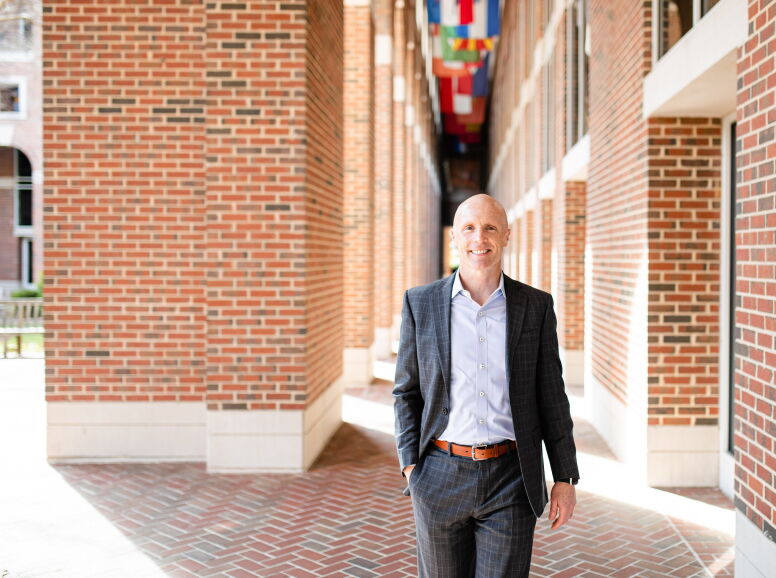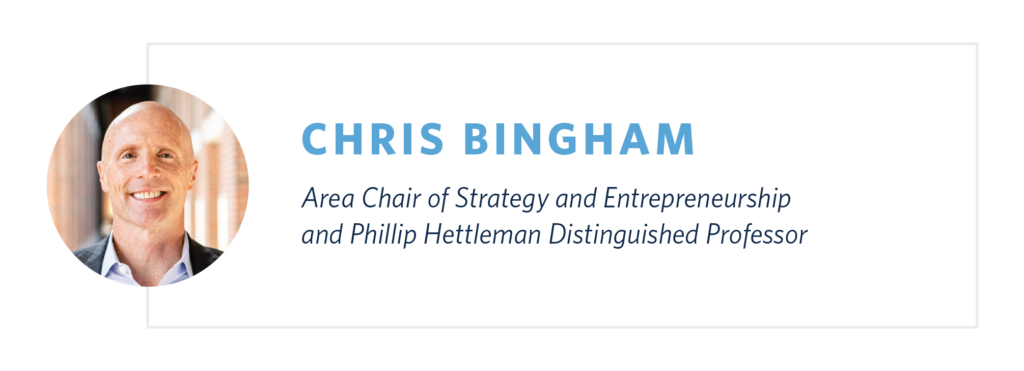Thought Leadership
3 Ways to Become an Innovative Leader with Crowd Sequencing

In this uncertain business environment, the archetype of the “lone genius” is an especially attractive one. Many leaders yearn to emulate singular innovators like Marie Curie, Thomas Edison, and others who seemingly conjured new technologies – and markets – into being through the sheer force of their creative genius alone. However, the truth is more complicated.
“Innovators need others’ help.” This reminder comes from UNC professor Chris Bingham and Harvard Business School professor Rory McDonald, authors of Productive Tensions: How Every Leader Can Tackle Innovation’s Toughest Trade-Offs. In their research on strategy, leadership, and innovation, Chris and Rory have determined that one of the best ways to become a more innovative leader is not to “go it alone.” Instead, they recommend using the people around us to generate solutions in a process called crowd sequencing.

Crowd Sequencing: Innovation on Tap
Crowd sequencing is a must-have part of the innovative leader’s toolkit. This is because all of us, regardless of our level of creativity and knowledge, are limited by what we know, how much information we can process, and cognitive biases. Chris and Rory point out that crowd sequencing is an especially effective tool for overcoming our limitations in cognitive processing, “particularly in…settings where leaders must make swift decisions in the face of uncertainty.”
Tapping the potential power of the crowd is a three-step process.
1) Solving the right problems
The Leader’s Challenge
The authors acknowledge that “leaders are constantly bombarded with issues, all of which seem to require attention and resources.” Further, it is not possible for leaders to have a wholly accurate picture of what is happening and what is at issue in every situation. These limitations are compounded by our shared cognitive bias toward overvaluing information that is consistent with our existing beliefs.
The Crowd-Sequencing Solution
“Solicit as much feedback as possible as quickly as possible from the most diverse possible array of individuals,” Chris and Rory advise. This strategy exposes our biases and blind spots by forcing us to keep exploring and look further afield for solutions.
2) Testing whether you’ve found the right solutions
The Leader’s Challenge
After selecting the right problem to solve, the innovative leader faces another challenge: capturing people’s interest. How can you determine if others will want, use, and share your innovation?
The Crowd-Sequencing Solution
To gain buy-in from stakeholders, Chris and Rory recommend designing your solution “for extreme users – that is, for individuals who are deeply invested in the problem you are trying to solve.” By focusing on these extreme users rather than the average (and thus less invested) user, you can sidestep the pitfall of designing a solution that is “generic, uninspiring, and easy to copy.”
3) Using crowds to execute solutions
The Leader’s Challenge
After you have determined what people want, your next goal is to determine if your team can actually supply it. The authors point out that this task entails further challenges in the form of additional complexity: “Executing a new solution…typically means solving a series of new problems that call for bits and pieces of know-how from an array of sources.”
The Crowd-Sequencing Solution
While leaders are often tempted to reach out to their own team members or close colleagues for ideas, Chris and Rory advise a different approach. “Established teams are liable to revert to the same old approaches,” they point out. Instead, innovative leaders would do better to reach out to people whom they barely know. Collaborating with people in other departments, or even organizations, can give leaders access to fresh ideas and expertise, both of which are crucial for crafting innovative solutions.

Accelerate Innovation
Innovation rarely, if ever, happens in a vacuum. Instead of trying to “do it all,” you can accelerate innovation within your team or organization by leveraging crowd sequencing’s power to gain deeper insight and overcome cognitive blind spots. By using crowds to solve the right problems, test the right solutions, and execute solutions, you can boost your problem-solving prowess as an innovative leader.
In their book Productive Tensions: How Every Leader Can Tackle Innovation’s Toughest Trade-Offs, UNC professor Chris Bingham and Harvard Business School professor Rory McDonald draw on cutting-edge research to guide leaders through the critical tensions that every innovator must master in this dynamic business environment.
